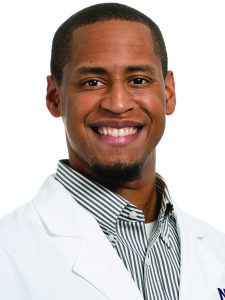By Andrea Cooper, Novant Health Healthy Headlines
Your kids spent last year boomeranging from room to room around your house, thanks to COVID-19. They’re raring to get back to playing sports. But after a year of inactivity, what can children and teens do now to avoid injuries later?

Dr. Adam Culver
Dr. Adam Culver, a primary care sports medicine physician at Novant Health Waxhaw Family & Sports Medicine in Waxhaw, N.C., has advice from both personal and professional experience. Culver played basketball at a NCAA Division III school, Trinity University in San Antonio, managing to avoid injuries along the way. Here’s his guidance for your family.
Q: A year of inactivity in 2020 could lead to a year of sports injuries in 2021. What can student athletes do to prevent injuries?
There needs to be a slower ramp-up to full speed ahead in your sport. The amount of time you’ll need will depend upon your current fitness and injury history, but you need to be careful as you increase the duration, intensity and frequency of your exercise.
Q: Are you seeing more young patients who were out of practice in their sport and pushed too hard too fast?
Definitely. Any time you’re out of practice, when you get back to doing it at a high level, those muscles are kind of shocked. You just tend to get injured a little bit more.
Lately, we’re seeing a lot of back pain, along with torn ACLs and meniscus injuries, which is a common knee injury.
Q: Many students play more than one sport. How does the cancellation of winter sports affect year-round student athletes now?
When you’re finishing up a winter sport, that conditioning and strength you built up serves you really well for spring sports. If you didn’t get a chance to play your winter sport and train like you normally would, that muscle memory and general level of fitness isn’t there.
Q: As a student, you played baseball and ran cross country along with playing basketball. Do you recommend cross training as a way to prevent injury?
One of the quickest ways that someone can get overuse injuries is by doing the same thing over and over, without any change. It’s very important that young athletes don’t specialize too early.
The more sports you’re able to play and get good at, the better you’re going to serve yourself for that future sport that you do decide to specialize in. Through high school, play as many sports as you can.
Q: Doctors typically recommend a nutritious diet, ample rest and stretching or warm-ups as key to preventing sports injuries. None of those sound especially exciting to the average 15-year-old. What would you tell them about the benefits?
A lot of kids focus on strength and the sport-specific movements they need, but general stretching, yoga or Pilates – there’s a dearth of that going on.
When I was in high school, it was hard for me to see how doing a downward dog pose would correlate to being able to run faster or shoot a basketball better. But as I got to college, I saw it’s important. Doing those things can give you an edge as an athlete. It’s part of taking care of your body.
Q: Students sometimes want to imitate their sports heroes’ moves. Bad idea?
Poor technique is a huge cause of injury. Sometimes students try to recreate what they see college kids or the pros do on TV, but they may not be strong enough. They may not have put in the work of developing the mechanics and end up hurting themselves.
You can’t go wrong by learning your fundamentals. A good coach will be able to tell you what you’re doing right and wrong, and what changes you might make to optimize your performance.
Q: Are there any considerations to prevent sports injury in teens going through a growth spurt?
I encourage those kids to be open and honest about what they’re feeling. Growth can be associated with pain in the knees, ankles, feet or even spine.
Kids also have a tendency to want to play through injuries to make it to the end of the season. But that can be damaging. Athletes should always be honest if something feels wrong. Speak up to your parents and doctor.
Parents can be helpful, too, by talking about times in your life where you were advised to do one thing but chose to do another and how you paid a price for that. Use sports to open up that line of communication between yourself and your child.
Novant Health
Healthy Headlines
Facebook
Instagram
Twitter
YouTube




